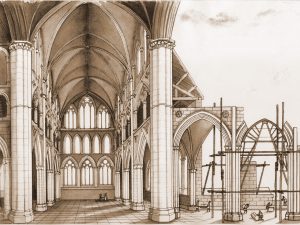OUTSIDERS
I recently received an unusual request from the architectural writer Fred Bernstein. “Since Trump was elected, as a subtle political statement, I have been posting profiles on Facebook of immigrants who have made a contribution to the built environment.” His request brought me up short. I’ve never thought of myself as an immigrant. Born in Scotland to Polish parents displaced by the Second World War (my father served in the Polish army), I was not technically an immigrant, but I was hardly a Scot. I grew up in England, a proper cricket-playing English schoolboy, but that was just a surface impression.


 The Canadian design mag, Azure, ran a
The Canadian design mag, Azure, ran a  The other day I read in
The other day I read in  According to a
According to a  Ian Volner’s
Ian Volner’s  There is a long tradition of architectural research in structures—one thinks of Nervi, Candela, Torroja, and Frei Otto, the pioneers of concrete like Perret, and much earlier the Byzantine and Gothic builders. Architects have sometimes experimented successfully with new building techniques and materials (Rudolph invented striated concrete blocks; Foster was the first to use structural glass fins). But research into how people use buildings is rare. The profession has always recognized the value of so-called post-occupancy evaluation, and the need for knowledge based on how people actually behave in and use buildings. The problem has been that this kind of research is extremely complicated,
There is a long tradition of architectural research in structures—one thinks of Nervi, Candela, Torroja, and Frei Otto, the pioneers of concrete like Perret, and much earlier the Byzantine and Gothic builders. Architects have sometimes experimented successfully with new building techniques and materials (Rudolph invented striated concrete blocks; Foster was the first to use structural glass fins). But research into how people use buildings is rare. The profession has always recognized the value of so-called post-occupancy evaluation, and the need for knowledge based on how people actually behave in and use buildings. The problem has been that this kind of research is extremely complicated,